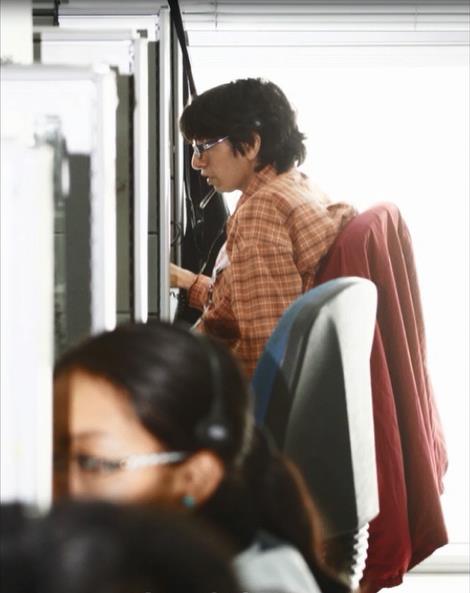Model promoting decent work for persons with all kinds of disabilities
- Solution
- I am Capable Model of 2012 National Council for the Inclusion of Persons with Disabilities (CONADIS), Ministry of Women and Vulnerable Populations (MIMP); Ministry of Labour and Employment Promotion (MINTRA, since July 2016)
- Organization
- CONADIS - National Council for the Integration of People with Disabilities Peru
- Country of Implementation
- Peru
- Region
- Latin America & Caribbean
- Subregion
- South America
- Start Year
- 2012
- First published
- 31.01.2017
Solution details
People
“It makes me happy that, through my work, I am able to support my family.” Jeny Rivera Cuña, Call Center IBT
By involving employers and disabled people’s organizations in skills development and employment services, and by accompanying and monitoring their placement and adaptation in the work environment, Peru’s “I Am Capable Model” has resulted in more than 3,000 new workers with disabilities joining the labour force and in a national labour policy that is responsive to the demands and needs of the disabled.
Problems Targeted
Based on a capability approach, Peru’s “I Am Capable Model” is a nationwide pilot model that promotes skills training and labour intermediation for persons with disabilities in order to enhance their employment opportunities in the open labour market both in the private and public sector. To date, the model has facilitated the hiring of 3,015 persons with disabilities. As of July 2016 it has been placed under the Ministry of Labour and Employment Promotion, and is now planned to become a national programme.
Solution, Innovation and Impact
Rights-based approach The work among the various stakeholders is focused on capabilities and rights, and is coordinated in a way that awareness-raising about labour inclusion is not based on charity. Market-relevant skilling Labour competency training also transmits a set of behaviours, enhances the ability to analyse and make decisions, and facilitates the transmission of information – all of which improve the employability of the worker. State-business dialogue The model is also a coordination tool between the public and private sector, facilitating training in competencies that are suitable to the demand.
Funding, Outlook and Transferability
At its inception the “I Am Capable Model” had only a small budget, essentially for merchandising. However, strategic partnerships, such as with business groups, has allowed it to have a far wider reach. It is now planned to be transformed into a national programme of the Ministry of Labour and Employment Promotion, even though this process has not yet been formalized.
Media
Life Story

THE STORY OF EDUARDO
“I like when clients say ‘thank you!’”
I am Eduardo. I’m 22 years old and I have Marfan syndrome, which is a sort of hyperelasticity. I live in Magdalena del Mar with my parents and my sister, and I want my family to be happy. I am a bit shy. In secondary school I studied English and IT. Now I wake up at 6:15 each day and go to work. When I started my training, my father used to accompany me and wait until the end. After a few days, however, I was able to travel by myself. I never missed a class – not even when someone robbed me of my wallet and cell phone. The biggest problem for persons with disabilities is that they don’t have the opportunity to show what they are capable of. Employers tend to reject you as soon as they see you. This is my first job. I like when clients say “thank you” and the fact that I can help them with their problems. For me, to have a stable job is a big opportunity. It changed my life, as I can now also help out financially at home. Thanks to the skills training that I received, I have become a better person. Going forward, I will be able to pay my studies to become a computer engineer.
Related information
- Connections
- 1
-
Organization